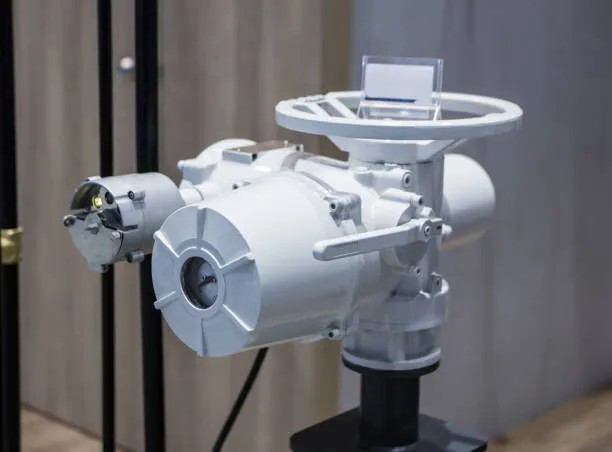Comprehensive Guide to Control Valve Actuators
Control valve actuators are essential components in fluid management systems, providing the mechanical force needed to regulate flow, pressure, and temperature. Whether powered by air, electricity, hydraulics, or operated manually, selecting the right actuator is critical to system performance, safety, and efficiency.
This guide offers a deep dive into the different types of valve actuators, the factors influencing actuator selection, and key sizing considerations to ensure optimal performance across industrial applications.
What Are Control Valve Actuators?
Actuators are devices that convert control signals into mechanical movement, enabling valves to open, close, or modulate flow. These mechanisms are central to automation in industries such as:
- Oil & Gas
- Chemical Processing
- Water & Wastewater Treatment
- Power Generation
- HVAC Systems
Control valve actuators are classified by power source and motion type. Below are the main categories:
Types of Valve Actuators
1. Pneumatic & Hydraulic (Fluid Power) – Quarter-Turn
Used with butterfly and ball valves, these actuators rotate the valve 90 degrees.
Features:
- Fast response
- High torque output
- Suitable for on/off and modulating control
2. Pneumatic & Hydraulic – Multi-Turn
Designed for gate and globe valves that require multiple rotations.
Best for:
- High-pressure applications
- Precise, slower operations
3. Electric Actuators – Multi-Turn
Common in automated systems with globe or gate valves.
Benefits:
- Accurate modulation
- Easy integration with control systems
4. Electric Actuators – Quarter-Turn
Ideal for compact installations using ball or butterfly valves.
Advantages:
- Low maintenance
- Consistent performance
- Good for remote and hazardous areas
5. Manual Actuators
Operated by handwheels or levers.
Applications:
- Low-cost solutions
- Backup systems
- Emergency use
Key Considerations for Actuator Selection
1. Differential Pressure: Max vs. Allowable
The pressure difference across a valve directly affects actuator sizing.
- Match Ratings: Ensure the actuator’s rated differential pressure matches or exceeds the valve's requirement.
- Solutions for Overload: Use stronger actuators or redesign valve trim if pressure exceeds specifications.
Example: For single-seated globe valves, metal seats often withstand higher pressure than soft seats.
2. Electric Actuator Sizing
Electric actuators must be properly sized to match valve requirements.
- Thrust Matching: Must deliver at least the same thrust as pneumatic alternatives.
- Specification Check: Confirm compatibility with system voltages, control signals, and pressure ranges.
3. Outlet/Downstream Pressure Estimation
Accurate downstream pressure is vital for actuator performance. Two common approaches:
- Method A:
- If inlet pressure < 100 bar → assume outlet pressure ≈ 0 bar
- If inlet > 100 bar → use atmospheric or liquid-level pressure
- Method B:
- OutletPressure=InletPressure−DifferentialPressureOutlet Pressure = Inlet Pressure − Differential PressureOutletPressure=InletPressure−DifferentialPressure
4. Valve & Process Requirements
- Control Accuracy: Look for actuators with precise modulation capability.
- Environmental Suitability: Ensure resistance to temperature, moisture, and corrosive conditions.
- Operating Speed: Match the required open/close time to the actuator's capabilities.
Actuator Selection Process
- Assess Operating Conditions:
- Flow rate, pressure, temperature, and media type.
- Choose Actuator Type:
- Pneumatic, electric, hydraulic, or manual – based on application and control needs.
- Size the Actuator Properly:
- Confirm it meets the torque/thrust requirements under max differential pressure.
- Ensure Compatibility:
- Check mounting interfaces and communication protocols.
- Consider Safety Features:
- Include fail-safe designs like spring-return or battery backup if necessary.
Why Choose a Professional Manufacturer?
Partnering with a reputable actuator and valve manufacturer ensures:
- ✅ Expert Consultation: Guidance on product selection tailored to your process.
- ✅ Reliable Products: Manufactured to strict standards with premium materials.
- ✅ Thorough Testing: Actuator-valve assemblies are pre-tested for performance and compatibility.
Avoiding low-cost or inexperienced suppliers reduces the risk of mismatched components, costly downtimes, or safety failures.
Conclusion
Selecting the right control valve actuator is a critical decision that affects your entire process system. By considering factors such as actuator type, sizing, differential pressure, and downstream pressure, you ensure your valve performs safely and reliably.
Whether you're automating a chemical process or managing pressure in a water treatment plant, investing in the right actuator—and the right manufacturing partner—guarantees long-term system stability, improved efficiency, and operational confidence. Know more about Google SEO Directory





Comments